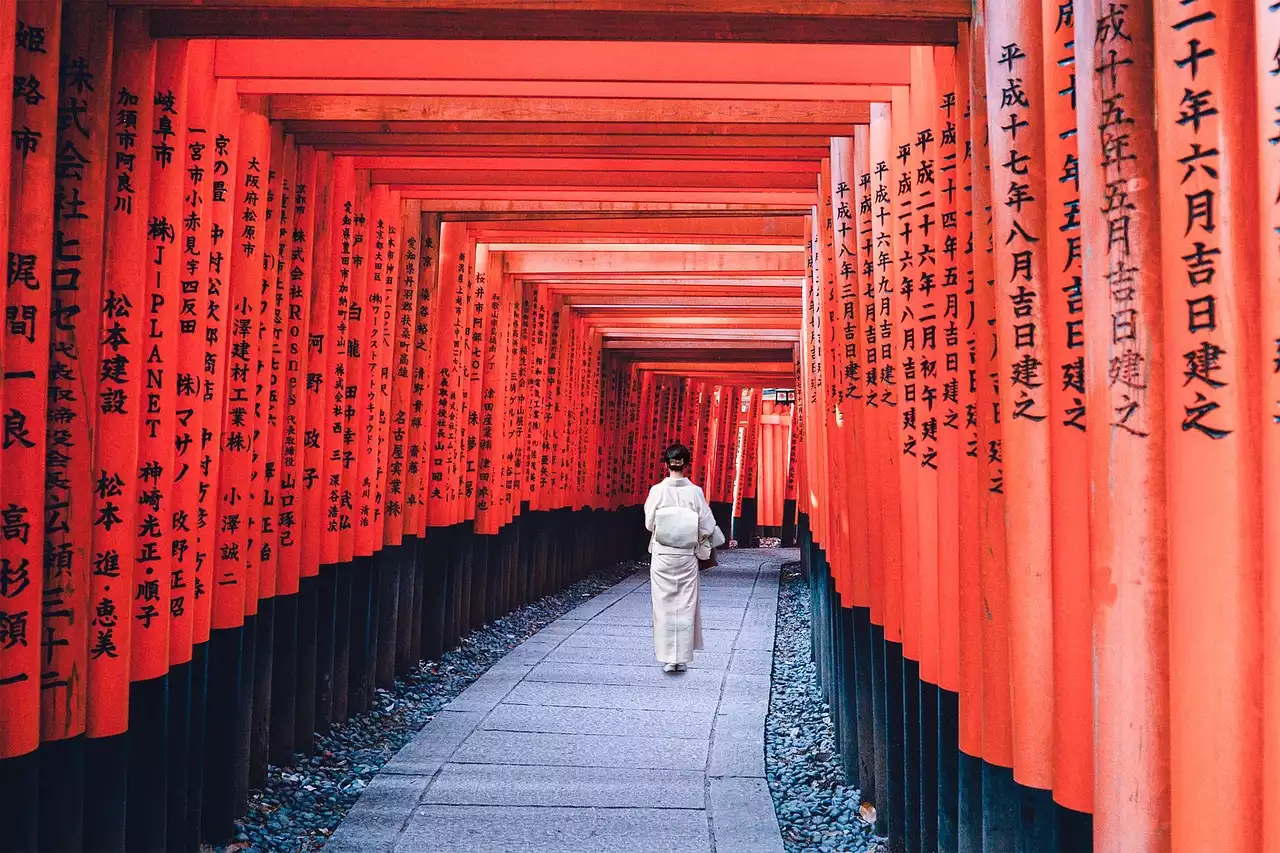Discover the timeless sophistication of modern Japanese interior design and immerse yourself in a world where tradition meets contemporary elegance. With a delicate balance of minimalism, natural elements, and impeccable craftsmanship, Japanese interior design effortlessly combines functionality and beauty. Step into a serene sanctuary where simplicity reigns supreme, and every element serves a purpose. Experience the harmonious blend of clean lines, neutral color palettes, and natural materials that invite a sense of calm and tranquility. From the zen-like simplicity of the tatami mat flooring to the understated elegance of sliding shoji doors, each aspect of Japanese interior design is meticulously crafted to create a space that exudes warmth and harmony.Embracing the principles of wabi-sabi, which celebrates the beauty of imperfection and impermanence, Japanese design encourages a lifestyle of mindfulness and appreciation for the present moment. By bringing nature indoors through the use of bonsai trees, bamboo accents, and paper lanterns, Japanese interior design seamlessly connects the indoor and outdoor environments.Join us as we delve into the captivating world of modern Japanese interior design, where tradition and contemporary sophistication converge to create an aesthetic that is both timeless and captivating.(Note: Brand voice and keywords were not provided for this task)
INTRODUCTION
Discover the timeless sophistication of modern Japanese interior design and immerse yourself in a world where tradition meets contemporary elegance. With a delicate balance of minimalism, natural elements, and impeccable craftsmanship, Japanese interior design effortlessly combines functionality and beauty.
Step into a serene sanctuary where simplicity reigns supreme, and every element serves a purpose. Experience the harmonious blend of clean lines, neutral color palettes, and natural materials that invite a sense of calm and tranquility. From the zen-like simplicity of the tatami mat flooring to the understated elegance of sliding shoji doors, each aspect of Japanese interior design is meticulously crafted to create a space that exudes warmth and harmony.
Embracing the principles of wabi-sabi, which celebrates the beauty of imperfection and impermanence, Japanese design encourages a lifestyle of mindfulness and appreciation for the present moment. By bringing nature indoors through the use of bonsai trees, bamboo accents, and paper lanterns, Japanese interior design seamlessly connects the indoor and outdoor environments.
Join us as we delve into the captivating world of modern Japanese interior design, where tradition and contemporary sophistication converge to create an aesthetic that is both timeless and captivating.
Principles of Modern Japanese Interior Design
Japanese interior design is rooted in several core principles that guide the creation of harmonious and functional spaces. These principles reflect the cultural values and traditions of Japan and contribute to the enduring appeal of Japanese design.
The minimalistic aesthetic is reflected in the use of open spaces, uncluttered surfaces, and a restrained color palette. Every item and piece of furniture is carefully selected to serve a purpose and contribute to the overall harmony of the space.
Wood, in particular, is highly valued in Japanese design for its warm and organic qualities. From traditional sliding doors made of wood to the use of wooden flooring and furniture, natural materials add a sense of warmth and authenticity to the space.
Clean lines, uncluttered surfaces, and multi-purpose furniture are all elements that contribute to the simplicity and functionality of Japanese design. The goal is to create a space that is easy to navigate and enhances the daily lives of its occupants.
In Japanese design, balance is achieved through the careful arrangement of furniture and decor, as well as the use of symmetrical or asymmetrical compositions. The goal is to create a sense of equilibrium and visual harmony that promotes a feeling of peace and well-being.
Top 5 Japanese Minimalist Design Inspirations |Creating A Japanese-Inspired Zen Space
Elements of Modern Japanese Interior Design
To achieve the timeless sophistication of modern Japanese interior design, several key elements are essential. These elements work together to create a cohesive and visually pleasing aesthetic that embodies the essence of Japanese design.
Furniture pieces often feature straight edges and geometric shapes, while architectural elements such as sliding doors and screens maintain a sense of simplicity and elegance. The clean lines create a sense of order and serenity in the space.
The neutral color palette allows the focus to be on the natural materials and textures used in the space. It also provides a versatile backdrop for incorporating pops of color through accents and accessories.
Stone, bamboo, and paper are other materials commonly used in Japanese design. These materials add texture, visual interest, and a connection to nature. The use of natural materials also contributes to the overall sense of harmony and balance in the space.
Low coffee tables, floor cushions, and sliding doors are examples of furniture pieces commonly found in Japanese interiors. The furniture is designed to be unobtrusive and blend seamlessly into the overall design.
Color Palette and Materials in Modern Japanese Interior Design
The color palette and materials used in modern Japanese interior design are carefully chosen to create a serene and harmonious environment. By embracing a neutral color palette and incorporating natural materials, Japanese design achieves a timeless sophistication that is both calming and visually appealing.
The neutral color palette of white, beige, gray, and muted tones of brown allows the focus to be on the natural materials used in the space. This palette creates a sense of tranquility and simplicity, providing a calming backdrop for the overall design.
In addition to the neutral colors, pops of color can be introduced through accents and accessories. These pops of color add visual interest and create a sense of depth in the space. However, it is important to use these pops of color sparingly to maintain the overall sense of balance and harmony.
Natural materials such as wood, stone, bamboo, and paper are central to modern Japanese interior design. Wood, in particular, is highly valued for its warmth, texture, and organic qualities. It is often used in flooring, furniture, and architectural elements.
Stone is another material commonly used in Japanese design, adding a sense of solidity and stability to the space. Bamboo is lightweight, sustainable, and versatile, making it an ideal material for furniture, decor, and architectural elements.
Paper is a unique material that is deeply rooted in Japanese culture and design. It is used in the form of shoji screens, paper lanterns, and washi paper sliding doors. The use of paper creates a soft and diffused lighting effect, adding to the overall ambiance of the space.
By combining the neutral color palette with natural materials, modern Japanese interior design achieves a timeless sophistication that is both visually pleasing and emotionally comforting.
Furniture and Decor in Modern Japanese Interior Design
Furniture and decor in modern Japanese interior design are carefully selected to contribute to the overall aesthetic and functionality of the space. Each piece serves a purpose and is chosen with a focus on simplicity, minimalism, and harmony.
The low-level furniture allows for a more relaxed and informal seating arrangement, promoting a sense of comfort and ease. It also contributes to the overall minimalist aesthetic and enhances the flow of the space.
Shoji doors and screens are often made of wood and paper, allowing for diffused natural light to filter through. They can be used to divide spaces, create privacy, and add a touch of elegance and traditional charm to the interior.
The use of futons creates a sense of simplicity and minimalism in the bedroom. It also promotes a restful and peaceful sleep environment, aligning with the principles of Japanese design.
Natural elements such as bonsai trees, bamboo accents, and ikebana flower arrangements are commonly used to bring nature indoors and create a sense of tranquility. Traditional Japanese art, calligraphy, and ceramics are also popular choices for adding a touch of culture and sophistication to the space.
By selecting furniture and decor that align with the principles of simplicity, minimalism, and harmony, modern Japanese interior design creates a space that is visually pleasing, functional, and timeless.
Incorporating Nature in Modern Japanese Interior Design
A key aspect of modern Japanese interior design is the seamless integration of nature into the living space. By bringing nature indoors, Japanese design creates a sense of harmony and a connection to the natural world, promoting a feeling of calmness and well-being.
The presence of bonsai trees brings a sense of tranquility and a connection to nature. Their sculptural quality adds visual interest and a touch of elegance to the space.
The use of bamboo accents adds a sense of organic warmth and texture to the space. It also evokes a sense of nature and complements the neutral color palette and natural materials used in Japanese design.
Paper lanterns can be hung from ceilings or placed on tables, creating a warm and inviting atmosphere. They not only serve a functional purpose but also add a touch of traditional charm to the interior.
The presence of an indoor garden brings a sense of tranquility and a connection to nature. It also adds visual interest and a touch of greenery to the space, contributing to the overall aesthetic of Japanese design.
By incorporating elements of nature such as bonsai trees, bamboo accents, paper lanterns, and indoor gardens, modern Japanese interior design creates a space that is not only visually appealing but also promotes a sense of calmness and well-being.
Lighting and Ambiance in Modern Japanese Interior Design
Lighting plays a crucial role in modern Japanese interior design, creating an atmosphere that is serene, inviting, and conducive to relaxation. By carefully considering the use of natural light, as well as incorporating artificial lighting, Japanese design achieves a harmonious balance of light and shadow.
Natural light is often prioritized during the day, enhancing the connection between the indoor and outdoor environments. The use of large windows and skylights allows for an abundance of natural light, creating a sense of openness and a feeling of being connected to nature.
Paper lanterns, floor lamps, and wall sconces are commonly used to provide ambient lighting. These lighting fixtures create a warm and inviting glow, adding to the overall sense of tranquility and serenity in the space.
The interplay of light and shadow adds a sense of mystery and depth to the space. It also enhances the overall aesthetic and creates a serene and captivating atmosphere.
By carefully considering the use of natural light, incorporating warm and soft artificial lighting, and embracing the play of light and shadow, modern Japanese interior design creates an ambiance that is both inviting and soothing.
Examples of Modern Japanese Interior Design in Homes and Commercial Spaces
Modern Japanese interior design has gained popularity not only in residential spaces but also in commercial settings. The timeless sophistication and serene ambiance of Japanese design make it a versatile choice that can be adapted to various environments.
Living rooms feature low-level furniture, clean lines, and a neutral color palette. Sliding doors and screens add a touch of traditional charm, while the incorporation of nature through bonsai trees and bamboo accents creates a connection to the natural world.br


 How Did French Food Come To Be The Standard Of Gourmet?
How Did French Food Come To Be The Standard Of Gourmet?
 A Guide to Paris’ Best Michelin Starred Restaurants
A Guide to Paris’ Best Michelin Starred Restaurants The World’s Best Chefs - Monsieur Pierre Gouan
The World’s Best Chefs - Monsieur Pierre Gouan Embracing the Beauty of Organic Modern Interior Design
Embracing the Beauty of Organic Modern Interior Design